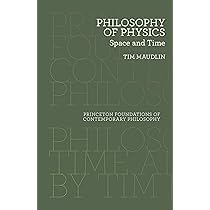
### Simon Stevin: An Innovative Engineer and Polymath’s Impact on Statics
In our preceding episode, we delved into two notable sixteenth-century treatises on statics: the pseudo-Aristotelian *Questiones Mechanicae* and Guidobaldo dal Monte’s *Mechanicorum Liber*. Today, we shift our focus from Italy to the Dutch-speaking regions to investigate the pioneering contributions of Simon Stevin (circa 1548–1620), a Flemish polymath whose work propelled the understanding of statics and significantly influenced future developments in physics. Stevin’s efforts were crucial to the scientific revolution of the seventeenth century, leaving a lasting impact on luminaries like Galileo and Descartes.

*Source: Wikimedia Commons*
### Simon Stevin: A Versatile Innovator
Often acknowledged primarily as an engineer, Simon Stevin’s legacy is much broader. In addition to his engineering feats, Stevin made noteworthy advancements in mathematics, physics, invention, music theory, political counsel, military science, among other fields. His published oeuvre spans an array of subjects including astronomy, navigation, bookkeeping, and even construction. Born around 1548 in Bruges as the illegitimate child of Antheunis Stevin and Cathelijne van der Poort, Stevin’s early years remain somewhat shrouded in mystery, yet he appears to have hailed from a wealthy, educated family.
Stevin’s career commenced with roles as a clerk and extensive travels throughout Northern Europe, leading him to pursue formal education in his thirties. In 1581, he became a student at the Protestant University of Leiden, a vibrant institution established a few years earlier, where he studied until 1590, albeit without earning a degree. Paradoxically, this “dropout” fostered important relationships within this academic setting, particularly with Maurits van Nassau, son of Willem van Oranje (the leader of the Dutch Revolt) and eventual Stadtholder of the Dutch Republic. Their close friendship paved the way for Stevin’s role as Maurits’ scientific advisor and tutor, playing a vital part in the founding of a military engineering school at Leiden University in 1600.

*Maurits van Nassau, School of Michiel Jansz. van Mierevelt*
*Source: Wikimedia Commons*
### A Commitment to Archimedean Ideas
Stevin, much like his contemporaries Tartaglia, Galileo, and dal Monte, was significantly inspired by the Renaissance resurgence of Archimedean theories. In 1586, he released a crucial text on statics and hydrostatics that included three primary works bound together: *De Beghinselen der Weeghconst* (*Principles of the Art of Weighing*), *De Weeghdaet* (*The Act of Weighing*), and *Beghinselen des Waterwichts* (*Principles of Hydrostatics*). These significant publications were issued by Françoys van Raphelinghen in Leiden, produced at Christoffel Platijn’s workshop.
###### Stevin’s Contribution to Statics: A Shift from Aristotelian Doctrine
In the aforementioned texts, particularly *De Beghinselen der Weeghconst*, Stevin made a distinct departure from the prevailing Aristotelian philosophy, opting instead for an Archimedean methodology. His commitment to articulating these concepts in Dutch—as opposed to Latin, the academic language of the day—distinguishes Stevin as one of the early advocates for promoting scientific literacy in the vernacular, a trend that would later be embraced by scholars like Galileo and Descartes, thereby enhancing access to specialized knowledge.
The presentation of the text adheres to a structure reminiscent of Euclid’s *Elements*, encompassing definitions, given terms, propositions, and Euclidean-style proofs. Stevin laid out terms and principles in a straightforward, logical manner, catering not only to learned scholars but also to technical practitioners lacking formal Latin education.
**The Format of *De Beghinselen der Weeghconst*:**
##### Book I:
1. **Definitions and Fundamental Terms**: Introduces key foundational concepts for grasping weight and balance.
2. **Propositions 1–4**: Establishes the Law of the Lever, a principle long recognized but systematically formalized through Stevin’s work.
3. **Propositions 5–12**: Analyzes the equilibrium of a balance with weights, incorporating calculations and geometric clarifications.
4. **Propositions 13–18**: Details the mechanics of lifting weights, with a focus on support mechanisms.
5. **Proposition 19**: Discusses equilibrium on an inclined plane, introducing